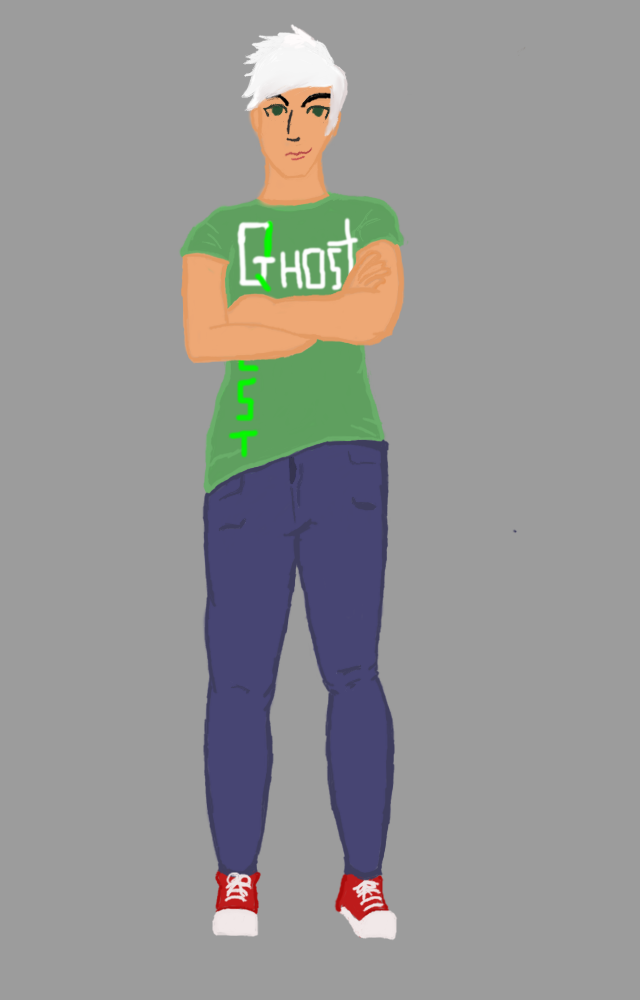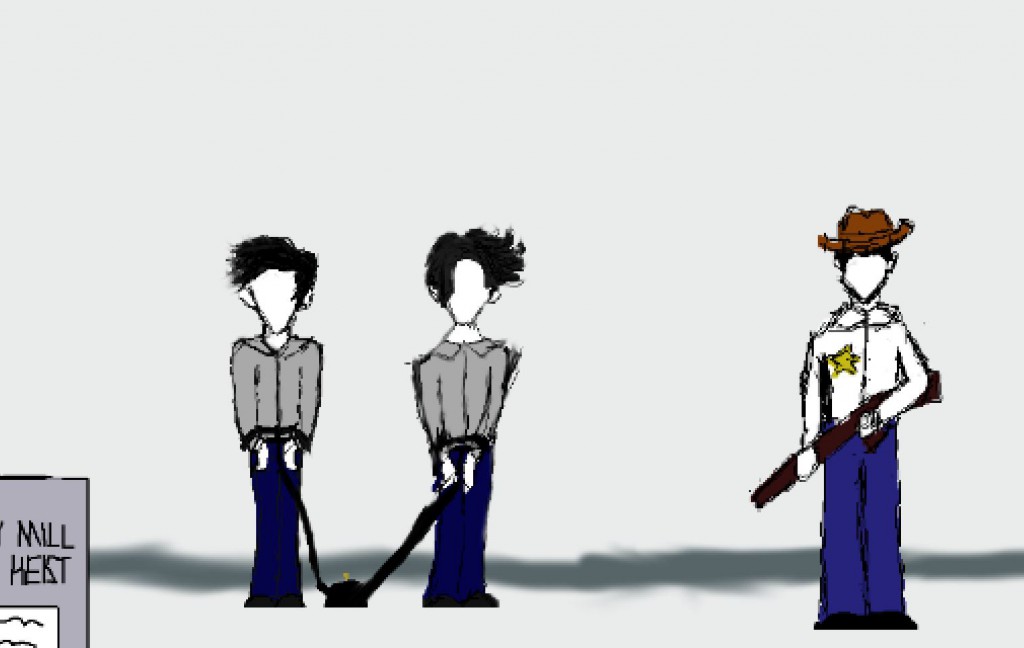
My game is about two ghost hunter twins, Becca and Casper Radley, who attempt to convince a wealthy couple that their mansion is haunted so that the couple will be forced to sell it at a price the hunters can afford. They are given a week to do so, and so every day the siblings talk to the people of town to fabricate a different haunting. In the process, they accidentally stir up real ghosts who are connected to the emotional instabilities of the people in the town, and so the player must exorcise these real spirits or risk being killed during their con.
In the levels I am submitting for this class, Casper goes to the local bank museum and steals a cowboy bank robber costume from one of the exhibits. He does so by trapping the bank owner in a photo booth and convincing the only employee to go help her. The sheriff’s mannequin disappears once he has done that, and there is a mystery as to where it went (spoilers, it will attack Casper in the next level).
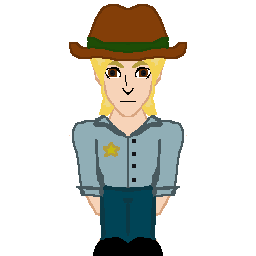
The radical aspect in my game is in its manifestation of emotional conflict. The ghosts are representations of the town’s denizens, and have been a part of their psyches for so long that they cannot notice them. The only people who are capable of comprehending the extremely damaging way the townspeople are going about their lives are the twins, who are outsiders. The twins are drifters, and show a sort of amused disdain for the connections that give rise to these ghosts (as evidenced by the fact that the only ghosts they have encountered before are fake ones that they self manufacture), and their lack of understanding about a greater emotional support network likewise hinders their ability to exorcise real ghosts at first. In order to effectively deal with the enemies of the game the twins don’t become physically more powerful, but rather learn more about how to handle interpersonal situations with a level of sincerity.
This game idea was inspired by my love of cheesy ghost hunting reality TV, and from learning that in many locations a homeowner must disclose that a house is haunted before selling the property. It has for the most part remained true to this original inspiration, though in the earliest iterations of the game Casper was himself a real ghost and the events of this game were not the first time the twins had committed this con. The iteration I brought to the first class of the semester is fairly similar to the one which I ended up completing for my conference, especially Casper’s general amorality. The major change in concept over the course of the semester is the concept of ghosts as a manifestation of emotional turmoil. In previous iterations, there was only one real ghost (the ghost of one of the homeowners’ deceased brothers), and I felt that this reduced the importance of the other NPCs since they weren’t involved in the central haunting.
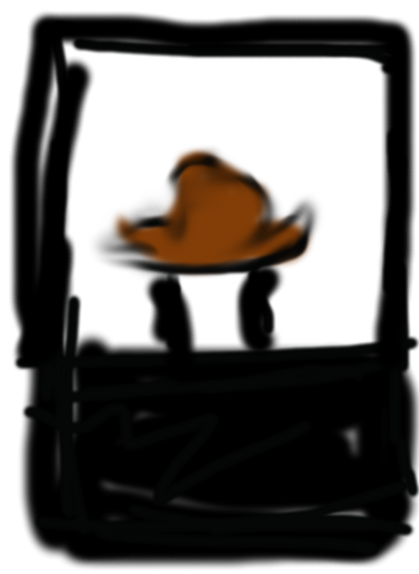
Development hit a bit of a snafu when I ran into an issue with the advancement of conversation flags resulting in the player missing some conversations. This has been rectified for the time being, though in the future I will likely end up removing the dialogue system I made and replacing it with a plug in.
From crits, I learned that people wanted more sound, and considered the strong point of the game to be the characters and humor in their interactions. To that end, the next thing I intend to add is more hitbox animations, extending the background music, adding sound to Casper’s footsteps, and stopping all background music when in the back of the museum.
I could have used my paper model more in earlier phases to predict the extensions I’d have to make to the maps. One of the weakest visual points of my game in its current phase, is, at least in my opinion, that there’s large areas of empty space beyond the boundaries of the map. This was done to avoid blue space visible on the edges. Had I used a frame around my player character during the initial testing, I would have been able to see how much extra background I would need and could have redone the art so that I could balance out where the walls were with how much space I needed in the map (my first draft was extremely crowded as well). One of the major critiques I received was that people were confused as to why they couldn’t walk further once they hit some of the invisible walls, and this could have been rectified if I’d paid more attention to my paper models.
The thing that surprised me the most about my abilities when making this game was how smoothly most of the initial programming went this time around. My last game, managing scene transitions was very difficult, but using the Game State Manager I was able to program in complex scene states and maintain a game across multiple rooms.
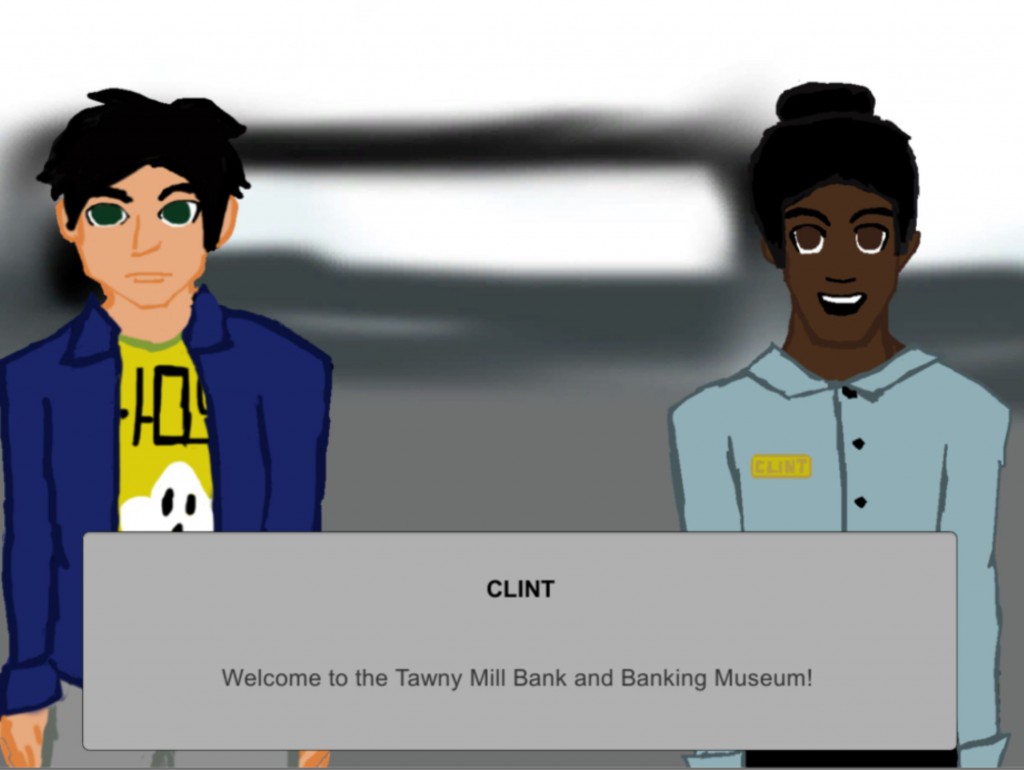
The most difficult thing to program was the conversation manager. If I were programming the game again, I would have written it with a simpler dialogue system in mind for easier debugging. Though I’m satisfied with the dialogue interactions that I came up with, the system we used from the book was not intended for the level of complexity I ended up with. I would have also started implementing the dialogue sooner. If I had discovered that it was having issues earlier, it would have been less stressful to debug it before the due date.

